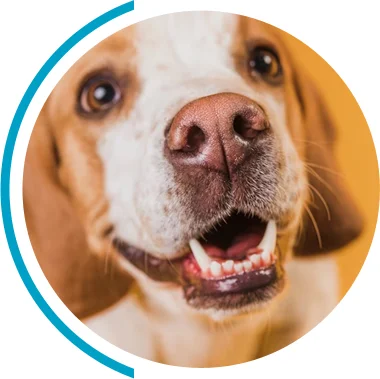In the wake of the COVID-19 pandemic, many dog owners have noticed changes in their pets’ behaviors, particularly regarding separation anxiety. Understanding and addressing this issue is vital for the well-being of both dogs and their owners. In this article, we will explore the effects of the pandemic on canine separation anxiety, various training techniques, and creating a supportive environment for dogs.
Separation anxiety in dogs is a behavioral condition characterized by excessive distress exhibited when a dog is separated from its owner or primary caregiver. This issue can lead to destructive behaviors, excessive barking, and other forms of distress, which can be overwhelming for both the pet and the owner. Understanding the underlying causes and symptoms of this condition is essential for providing the necessary support and care for affected dogs.
Separation anxiety typically occurs when a dog experiences extreme agitation and discomfort upon being left alone. This condition can manifest in various ways, including persistent barking, attempts to escape, and even destructive behaviors such as chewing furniture or urinating indoors despite being house-trained. The severity of separation anxiety can range from mild to severe, and it often requires a tailored approach to treatment. Factors such as the dog’s history, previous experiences, and even genetics can play a significant role in the development of this condition.
The symptoms of separation anxiety can vary between dogs, but common indicators include:
Recognizing these signs promptly is crucial for effective intervention. Additionally, some dogs may exhibit more subtle signs of distress, such as changes in appetite or clinginess when their owner is present. It’s important for pet owners to observe their dog’s behavior closely and note any changes that may indicate anxiety, as early detection can lead to more successful management strategies.
During the pandemic, many people spent more time at home, which helped reinforce their dog’s attachment. As restrictions ease and routines shift back to normal, dogs left alone may struggle with feelings of abandonment, leading to increased anxiety. This transition requires careful management to alleviate concerns and promote a sense of security. Owners may need to gradually acclimate their dogs to being alone by implementing short departures and gradually increasing the duration, allowing their pets to adjust to the new normal without overwhelming them.
Moreover, the emotional toll of the pandemic has also affected pet owners, who may experience stress and anxiety themselves. This can inadvertently impact their dog’s behavior, as dogs are highly attuned to their owner’s emotions. Creating a calm and reassuring environment is essential during this transition period. Incorporating positive reinforcement techniques, such as rewarding calm behavior when leaving or returning home, can help foster a sense of security and reduce anxiety in dogs. Engaging in regular exercise and mental stimulation can also play a vital role in alleviating stress and promoting overall well-being for both the dog and the owner.
Proper training plays an essential role in addressing separation anxiety. With the right techniques and consistent application, owners can help their dogs develop coping strategies for being alone, which can significantly reduce symptoms.
Consistency is key in any training regimen. Establishing a routine helps dogs understand what to expect, reducing their anxiety about separations. Regular practice allows them to gradually learn that being alone is part of their day-to-day life and that their owner will return.
Several effective training techniques can help reduce the severity of separation anxiety. These may include:
Implementing these measures can create a healthier mindset for your dog regarding separation.
Utilizing positive reinforcement is crucial in the training process. Rewarding your dog for calm behavior when you leave and return can help build their confidence and ease anxiety. Over time, this approach will foster a more relaxed attitude toward separations.
Establishing a safe and comfortable environment is fundamental for canine mental health. When dogs feel secure in their surroundings, they are less likely to exhibit signs of anxiety.
A designated safe space within the home can significantly comfort a dog during separations. This area should be quiet, contain their favorite bedding, toys, and any comforting items that can help ease their anxiety. Over time, this safe space will come to represent security and calm.
To maximize comfort levels, consider the following tips:
These aspects contribute to making your dog’s environment conducive to relaxation.
While many dogs can benefit from owner-led training, some may require professional intervention. Identifying when to seek help is crucial for effectively managing severe separation anxiety.
If your dog’s behavior escalates to destructive tendencies or extreme distress, it may be time to contact a qualified dog behaviorist or trainer. Warning signs include persistent barking, severe anxiety, or any self-harming behaviors. Observing these behaviors should prompt a conversation with a professional.
When working with a professional, expect a comprehensive assessment of your dog’s behavior. The behaviorist will collaborate with you to develop a customized training plan, focusing on developing coping strategies tailored to your dog’s specific needs. Additionally, they may provide tips to reinforce effective training at home.
Even after the pandemic, maintaining your dog’s progress in managing separation anxiety is essential. Routines may continue to change, and dogs can revert to anxiety-driven behaviors without consistent support.
As schedules normalize, prepare your dog for transitions by gradually reintroducing brief separations. This process helps to minimize anxiety and reinforces coping skills. Awareness of your dog’s responses will guide the adjustments you may need to make.
Regularly revisiting training techniques, providing ongoing positive reinforcement, and maintaining a comforting environment will contribute to long-term success in managing your dog’s anxiety. By staying proactive, owners can ensure their pets continue to thrive in a stable and reassuring atmosphere.
In conclusion, managing separation anxiety in dogs—especially following significant life changes brought by the pandemic—requires patience, consistency, and the right strategies. By understanding your dog’s needs and employing effective training techniques, you can help them feel secure and confident, leading to a healthier and happier life together.
If you’re feeling overwhelmed by your dog’s separation anxiety post-pandemic, remember that you’re not alone. At The Grounded Hound Canine Coaching, we understand the challenges you and your furry friend are facing. With a CTC from the Academy for Dog Trainers, an ABCDT from the Animal Behavior College, and specialized certifications in Separation Anxiety (CSAT and SA Pro), we are equipped to offer you the support and guidance you need. Our training is rooted in Patience, Kindness, and Consistency, ensuring that we build a strong bond of understanding between you and your dog. Contact Us Today to start your journey toward a happier, more secure companion.

